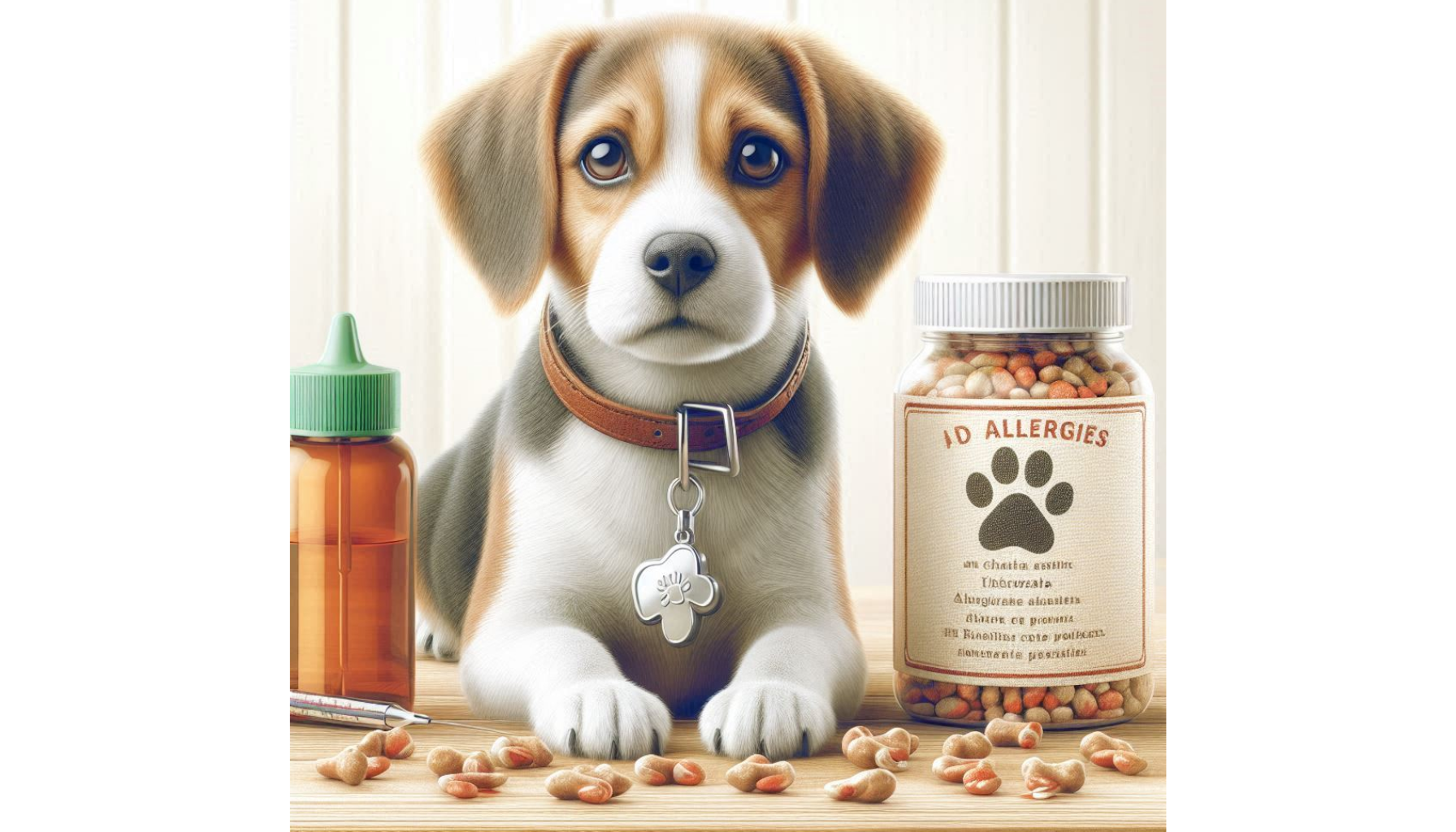Food allergies in pets can cause itching, digestive problems, and chronic discomfort. Many pet owners mistake food allergies for seasonal allergies or skin conditions, leading to untreated symptoms.
The good news? With the right diet and management plan, you can help your pet feel comfortable and allergy-free!
In this guide, you’ll learn how to identify food allergies, common trigger ingredients, and the best ways to manage and treat them.
1. What Are Food Allergies in Pets? 🤔🐾
Food allergies occur when a pet’s immune system overreacts to an ingredient, treating it as a harmful substance. This leads to inflammation, skin irritation, and digestive upset.
✅ Food Allergies vs. Food Intolerance:
✔ Food Allergy: Immune system reaction (itching, skin irritation, chronic infections).
✔ Food Intolerance: Digestive reaction (diarrhea, bloating, gas).
📌 Tip: If your pet has skin issues and stomach problems, they may have both an allergy and intolerance.
2. Signs & Symptoms of Food Allergies 🚨🐾
✅ Common Symptoms of Food Allergies in Dogs & Cats:
🔴 Itchy skin (face, paws, belly, ears).
🔴 Chronic ear infections.
🔴 Red, inflamed skin or rashes.
🔴 Excessive licking or chewing paws.
🔴 Vomiting or diarrhea.
🔴 Frequent gas or bloating.
🔴 Hair loss or hot spots.
🚨 Warning: Many pet owners mistake itchy skin for fleas or environmental allergies—but if symptoms persist year-round, food may be the issue!
📌 Tip: If your pet has chronic ear infections, it could be a sign of a food allergy, not just bad hygiene.
3. Common Food Allergy Triggers 🚫🐾
Certain ingredients are more likely to cause allergic reactions in pets.
✅ Most Common Food Allergens in Pets:
🐾 Dogs:
❌ Chicken
❌ Beef
❌ Dairy
❌ Wheat
❌ Soy
❌ Eggs
🐾 Cats:
❌ Fish
❌ Dairy
❌ Chicken
❌ Beef
❌ Grains (rare, but possible)
📌 Tip: Protein sources (chicken, beef, fish) are the most common allergens—not grains!
🚨 Avoid: Switching between different proteins too often—it increases the risk of developing allergies.
4. How to Diagnose Food Allergies 🏥🐾
The best way to confirm a food allergy is through an elimination diet trial.
✅ Steps to Diagnose a Food Allergy:
1️⃣ Choose a hypoallergenic diet (limited-ingredient or hydrolyzed protein food).
2️⃣ Feed ONLY that diet for 8-12 weeks—no treats, table scraps, or flavored medications.
3️⃣ Observe symptoms—if they improve, your pet likely has a food allergy.
4️⃣ Reintroduce ingredients slowly—if symptoms return, you’ve found the allergen.
📌 Tip: It takes 8-12 weeks for allergens to leave your pet’s system—be patient!
🚨 Avoid: Feeding random “grain-free” diets—grains aren’t the main cause of food allergies.
5. Best Diets for Pets with Food Allergies 🍖🐾
Once you identify the allergen, switch to a safe, hypoallergenic diet.
✅ Recommended Diets for Food Allergies:
✔ Limited-Ingredient Diet (LID) – Uses a single protein & carb source (e.g., venison & sweet potato).
✔ Novel Protein Diet – Uses less common proteins (duck, rabbit, kangaroo).
✔ Hydrolyzed Protein Diet – Proteins are broken down so the immune system doesn’t recognize them.
📌 Tip: Always check for hidden allergens (chicken fat, dairy, soy) in commercial foods!
🚨 Avoid: Feeding multiple protein sources—stick to a single-protein diet.
6. Best Homemade Diets for Pets with Allergies 🍲🐾
If commercial diets don’t work, you can prepare homemade meals with your vet’s guidance.
✅ Homemade Food for Allergy-Prone Pets:
✔ Protein: Duck, rabbit, venison, turkey.
✔ Carbs: Sweet potato, pumpkin, quinoa.
✔ Healthy fats: Coconut oil, fish oil.
📌 Tip: Work with a veterinary nutritionist to make sure your pet’s homemade diet is nutritionally balanced!
🚨 Avoid: Cooking meals without guidance—nutrient deficiencies can be harmful.
7. How to Prevent Future Allergic Reactions 🛑🐾
✅ How to Avoid Future Allergy Flare-Ups:
✔ Stick to one protein source at a time.
✔ Avoid table scraps & unknown treats.
✔ Use hypoallergenic treats (single-ingredient).
✔ Monitor for new allergy symptoms over time.
📌 Tip: If your pet develops a new allergy, switch to a completely new protein source.
🚨 Avoid: Buying “grain-free” food unless a vet recommends it—most food allergies are to animal proteins, not grains.
8. When to See a Vet for Food Allergies 🏥🐾
If your pet’s symptoms don’t improve or they have severe reactions, see a vet for further testing.
🚨 Signs Your Pet Needs a Vet’s Help:
🔴 Symptoms continue after switching diets.
🔴 Frequent vomiting, diarrhea, or extreme weight loss.
🔴 Skin infections, open sores, or hair loss.
📌 Tip: Some pets may need prescription allergy medications for severe cases.
9. Can Food Allergies Be Cured? ❓🐾
Food allergies can’t be cured, but they can be managed with the right diet.
✅ Managing Food Allergies Long-Term:
✔ Stick to a strict, allergy-friendly diet.
✔ Monitor for new sensitivities over time.
✔ Avoid unnecessary diet changes—switching proteins too often can cause new allergies.
📌 Tip: If your pet develops multiple allergies, consult a veterinary dermatologist for advanced options.
10. Myth-Busting: Common Misconceptions About Pet Food Allergies 🤯🐾
🚫 Myth: “Grains are the #1 cause of food allergies.”
✔ Truth: Most food allergies are caused by animal proteins, not grains.
🚫 Myth: “Changing food frequently prevents allergies.”
✔ Truth: Frequent diet changes increase allergy risks—stick to a stable diet.
🚫 Myth: “A raw diet cures food allergies.”
✔ Truth: Raw diets don’t prevent allergies and may contain bacteria that worsen gut health.
📌 Tip: Always consult a vet before making major diet changes!
Final Thoughts: Managing Food Allergies for a Healthier Pet! 🥩🐾
Food allergies can be frustrating, but with the right diet and management plan, your pet can live a happy, allergy-free life!
✅ Identify food allergies using an elimination diet.
✅ Switch to a hypoallergenic or limited-ingredient diet.
✅ Avoid allergens like chicken, beef, dairy, and soy.
✅ Monitor for new sensitivities and adjust their diet as needed.
🐾 With the right approach, your pet can enjoy delicious, allergy-friendly meals and feel their best!
